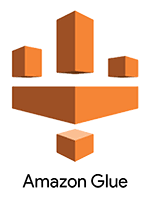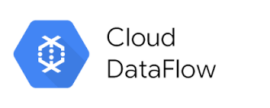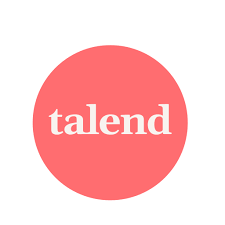-
AWS Glue: Best for fully managed ETL service
-
Azure Data Factory: Best for Azure users
-
Google Cloud Dataflow: Best for scalability
-
IBM DataStage: Best for large enterprises
-
Oracle Data Integrator: Best for systems that rely on Oracle technologies
-
Informatica Mapping Designer: Best for advanced users
-
Talend: Best for small or simple projects
-
Pentaho Data Integration: Best for small and midsize businesses
Extract, transform and load tools are designed to help organizations extract data from disparate sources and consolidate the extracted data into actionable information and insights. With ETL tools, organizations can significantly improve data quality and simplify data management. They can work in either cloud or on-premises IT environments; they also come in either proprietary or open-source software. Here are some of the most popular ETL tools in those categories.
SEE: Explore the difference between ETL and ELT.
Jump to:
- Top ETL tools comparison
- Frequently asked questions about ETL tools
- Key features of ETL tools
- Benefits of ETL tools
- How do I choose the best ETL tool for my business?
- Review Methodology
Top ETL tools comparison
Here is how the best ETL tools compare in terms of core features.
| Software | Cloud-native support | Prebuilt connectors | Visual interface | Data integration | Pricing |
| AWS Glue | Yes | Yes | Yes | Yes | Priced per usage |
| Azure Data Factory | Yes | Yes | Yes | Yes | Priced per usage |
| Google Cloud Dataflow | Yes | Yes | No | Yes | Priced per usage |
| IBM DataStage | Limited | Yes | Yes | Yes | Subscription-based pricing |
| Oracle Data Integrator | Yes | Yes | Yes | Yes | Subscription-based pricing |
| Informatica Mapping Designer | Yes | Yes | Yes | Yes | Subscription-based pricing |
| Talend | Limited | Yes | Yes | Yes | Subscription-based pricing |
| Pentaho Data Integration | Yes | Yes | Yes | Yes | Subscription-based pricing |
AWS Glue is a nice fit for companies that use SQL databases, AWS and Amazon S3 storage services. AWS Glue enables users to clean, validate, organize and load data from disparate static or streaming data sources into a data warehouse or a data lake. It can also process semi-structured data such as clickstream (e.g., website hyperlinks) and process logs. AWS Glue’s strength is in its ability to work with SQL, which many companies have competence in. On the programming side, AWS Glue executes jobs using either Scala or Python code. Pricing is free for the first million accesses and objects stored and is billed monthly based upon usage thereafter.
AWS Glue: Best for fully managed ETL service

Pricing
Features
Pros
Cons
Azure Data Factory is a pay-as-you-go cloud-based ETL tool that automatically scales processing and storage to meet your data and processing demands. Its strength is that it can be used by both IT professionals and end users. This is because the tool has both a no-code graphical user interface for end users and a code-based interface for IT. Both code and no-code interfaces feature data pulls from more than 90 connectors. Among these connectors are AWS, DB2, MongoDB, Oracle, MySQL, SQL, Sybase, Salesforce and SAP. Pricing is based on usage.
Azure Data Factory: Best for Azure users

Pricing
Features
Pros
Cons
Google Cloud Dataflow is part of the Google Cloud platform and is well integrated with other Google services. Dataflow uses the Apache Beam open-source technology to orchestrate the data pipelines that are used in DataFlow’s ETL operations. Google Cloud Dataflow requires IT expertise in SQL databases and Java and Python programming languages. This software can be deployed for both batch and real-time processing and in either a scheduled or real-time on-demand mode. Because Google Cloud Dataflow is cloud-based, it can automatically scale to accommodate the processing and storage that you need for any ETL job. Google Cloud Dataflow is ideal for shops that heavily use the Google Cloud platform.
Google Cloud Dataflow: Best for scalability

Pricing
Features
Pros
Cons
DataStage is part of the IBM Information Server Platform. It’s a robust ETL solution that uses a client/server design where jobs are created and administered via a Windows client against a central repository on a server. This tool is designed for IT professionals who have a sound understanding of SQL and knowledge of the BASIC programming language, which InfoSphere DataStage uses. Regardless of the platform, the IBM DataStage ETL software can integrate data on demand across multiple, high volumes of data sources and can target applications using a high-performance parallel framework. DataStage also facilitates extended metadata management and enterprise connectivity. Pricing is available upon request.
IBM DataStage: Best for large enterprises

Pricing
Features
Pros
Cons
Oracle Data Integrator is a strong platform for larger enterprises that run other Oracle applications that supports data integration for both structured and unstructured data. ODI is designed to move data from point to point across an entire company’s business functions. Like Oracle ERP, it can support integrated workflows across entire organizations. ODI can process data integration requests that range from high-volume batch loads to service-oriented architecture data services that enable software components to be called and reused in new processes. ODI also supports relational databases and has a library of application programming interfaces for third-party data and applications. It supports Spark Streaming, Hive, Kafka, Cassandra, HBase, Sqoop and Pig. Customized pricing. Check how Oracle Data Integrator compares with SAP Data services.
Oracle Data Integrator: Best for systems that rely on Oracle technologies

Pricing
Features
Pros
Cons
Informatica PowerCenter is an enterprise-strength ETL tool that is best utilized by large organizations that need to move data across many different business functions. PowerCenter extracts, transforms and loads data from a variety of different structured and unstructured data sources that span internal and external (cloud-based) enterprise applications. PowerCenter has many APIs for a variety of different third-party applications and data. Common data formats that PowerCenter works with include JSON, XML, PDF and Internet of Things machine data. PowerCenter can work with many different third-party databases, such as SQL and Oracle databases. PowerCenter will transform data based on the transformation rules that are defined by IT. Pricing is based on usage.
Informatica Mapping Designer: Best for advanced users

Pricing
Features
Pros
Cons
Talend is open-source software that can quickly build data pipelines for ETL operations. It is a tool best utilized by IT because it requires changes to code every time you need to change a job. That being said, Talend is a highly user-friendly tool for IT professionals that uses a graphical user interface to effect connections to data and applications. Talend Open Studio can pull both structured and unstructured data from relational databases, software applications and files. It can be used with on-premises, cloud and multi-cloud platforms, so Talend is a good fit for companies that operate in a hybrid computing mode that includes both in-house and on-cloud systems and data. A basic version of Talend is available for free. The enhanced version of Talend is priced on a per-user basis. For more information, read the full Talend review.
Talend: Best for small or simple projects

Pricing
Features
Pros
Cons
Pentaho Data Integration is an open-source ETL tool that provides data mining, reports and information dashboards. It works with either structured or unstructured data. As an in-house ETL resource, Pentaho can be hosted on either Intel or Apple servers. It uses JDBC to connect to a variety of relational databases, such as SQL, but it can also connect to proprietary enterprise databases like DB2. Pentaho captures, cleans and loads standard and unstructured systems data, and it works equally well processing incoming IoT data from the field or factory floors. Pentaho’s strength is its ability to be used by citizen developers, such as business end users, via no-code capabilities. This makes it a good fit for small and midsize businesses that may not have the IT expertise onboard to run ETLs. Users can use a drag-and-drop GUI to get their jobs done. Pentaho Data Integration: Best for small and midsize businesses

Pricing
Features
Pros
Cons
Frequently asked questions about ETL tools
What is an ETL tool?
ETL tools transform and consolidate raw data from disparate sources to prepare it for target systems. Today, they play a major role in corporate decision-making. This is because data is culled from a variety of sources and then assembled in a single data repository that corporate decision-makers can access, providing a 360-degree view to make more informed decisions.
SEE: Check out TechRepublic Premium’s database engineer hiring kit.
ETL tools provide a level of comprehensive analysis and visibility that was difficult to achieve even a decade ago. Corporate departments were using their own systems and data, and this data stayed in data silos that weren’t always shared with others with a need to know. With more modernized approaches to preparing and sharing data, a more complete picture of what is going on throughout the company is available to corporate decision-makers.
How do ETL tools work?
ETL software obtains data from one or more sources, transforms the data into a form that is acceptable for another source and then moves the data to the new target source. ETL software is an automated software tool that automates this process. This saves time and effort and helps prevent manual errors.
When an ETL tool extracts data, the data can be extracted from any internal or external data source, whether it is a file or a database.
Once the ETL tool has the data, it transforms the data into a form that is compatible with the target data repository. This data transformation is based on predefined data conversion rules, which then perform the data transformation automatically.
As a final step, the ETL software takes the transformed data and moves it into the target data repository.
How do you use an ETL tool?
ETL tools automate the movement of data between systems, whether on-premises or in the cloud. These tools can be run for both batch and real-time data processing.
However, ETL tools are only as good as the set of business and operational rules that IT provides them. For instance, an organization will have a set of data governance and data cleaning standards. While ETL tools can automate these rules and standards, IT still must define the rules of operation and data quality and governance.
It is also up to IT to continuously monitor the ETL process in the same way IT monitors the performance of any other piece of software. This way, if there is a problem, IT can intervene and solve it.
How do you evaluate an ETL tool?
While ETL tools now automate much of manual processes data migration via APIs that automatically connect to many popular databases and applications, there are several factors companies should consider before purchasing an ETL solution:
- What do you need the ETL for? Consider the different sources your data resides in as well as the types of data you have and whether you need to move it to an on-premises, a cloud or a hybrid infrastructure.
- How do you want to prepare your data? Is the generic formatting (system to system or database to database) your ETL tool comes pre-packaged with going to meet your data cleaning and formatting needs, or do you need to add extra edit rules to the data?
- How well can you support and leverage your ETL tool? Consider the size of your company and the number of skilled personnel you have who are trained in ETL as well as whether non-IT business users also need to use the ETL software.
- How much do you want to pay for an ETL tool? Your budget should consider the cost of usage and data center storage, as well as the cost of training and support.
Key features of ETL tools
Cloud-native support
Cloud-native support in ETL tools refers to the ability of the solution to use cloud computing to process data. This is different from the traditional on-premises infrastructure. The major benefits of cloud-native support are that it is scalable and has greater flexibility as it allows organizations to be more agile.
Pre-built connectors
Pre-built connections are ready-to-use interfaces in ETL tools. This allows for quick and easy integration with different data sources and targets. A key advantage of pre-built connectors is that they minimize the need for custom coding, allowing for better productivity. They also help promote more streamlined data integration workflows.
Data integration
With data integration, ETL tools are able to move and transform raw data from disparate sources. This allows for a unified view of business data. Centralized data management helps improve efficiency in processing data. It also allows access to real-time data for better decision-making.
Visual interface
A visual interface for ETL tools helps simplify the process, helping boost productivity and enhance ease of use. For example, interface features such as drag-and-drop allow users to easily create integration workflows. The visual interface also helps with better visualization of data flow to help identify sources of errors or bottlenecks in the data flow.
Benefits of ETL tools
ETL tools offer a variety of benefits to organizations as they provide a structured approach to extracting data from different sources and transforming it into a more usable format. Here are some of the top benefits of ETL tools:
- Improve data quality by removing data inconsistencies. This helps improve the reliability of decision-making.
- Reduce the likelihood of human errors by automating several recurring or repetitive steps to data extraction and transformation.
- Increase business agility by offering organizations the information required to respond quickly to changing business needs.
- Boost operational residence by reducing reliance on the IT team for data processing.
How do I choose the best ETL tool for my business?
Data integration is one of the most persistent challenges for IT teams. What ETL tools bring to the table is a simplified way of moving data from system to system and from data repository to data repository.
ETL tools come in a wide variety that can meet the needs of enterprises with complex data and system integration needs in hybrid environments, as well as smaller companies that lack IT expertise and must watch their budgets. The ETL tool your business chooses will depend on its specific use cases and budget.
Review methodology
The best ETL tools were chosen based on different factors, including ease of use, features, connectivity and scalability. We also looked at the type of support and user community available for each tool.








